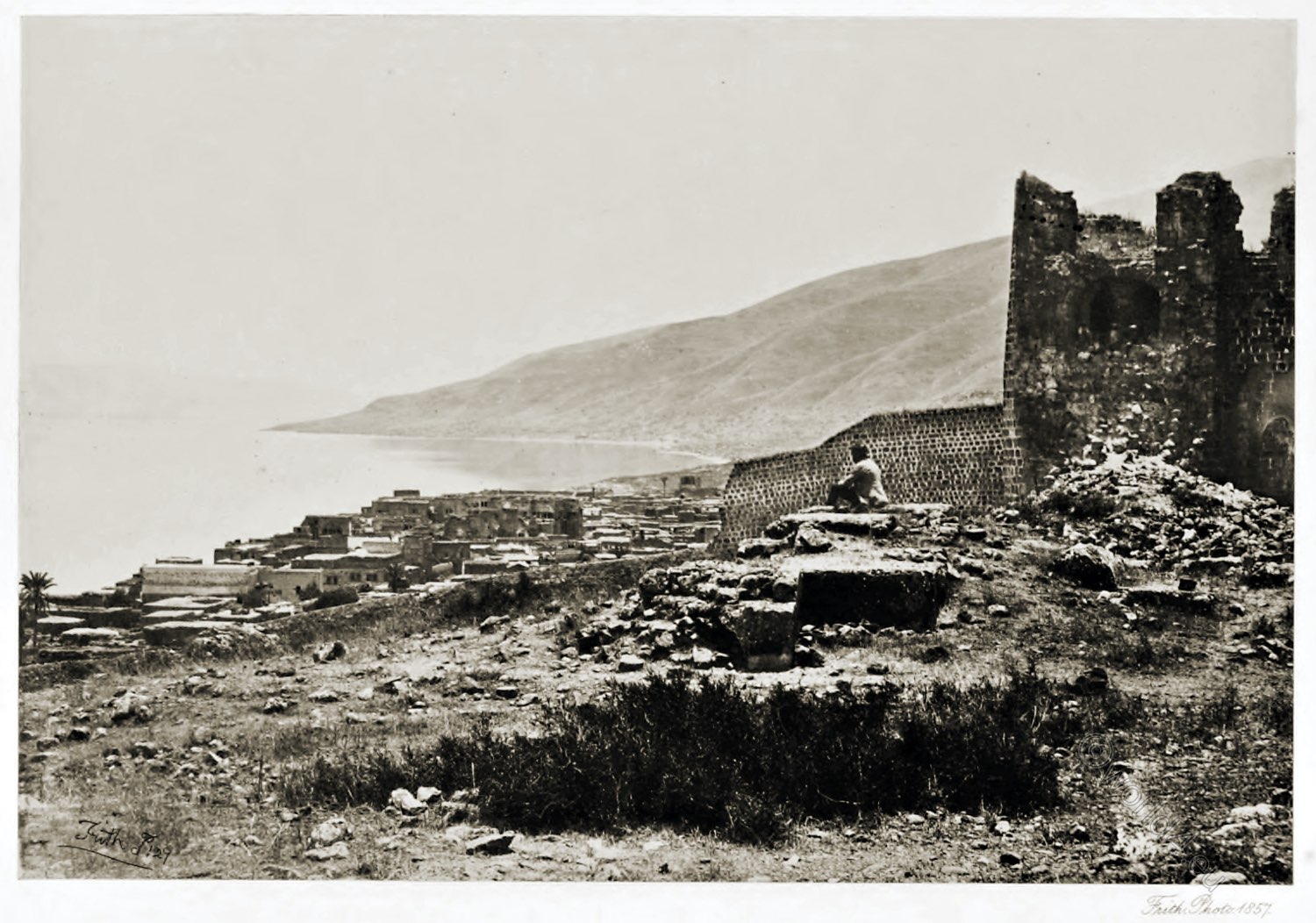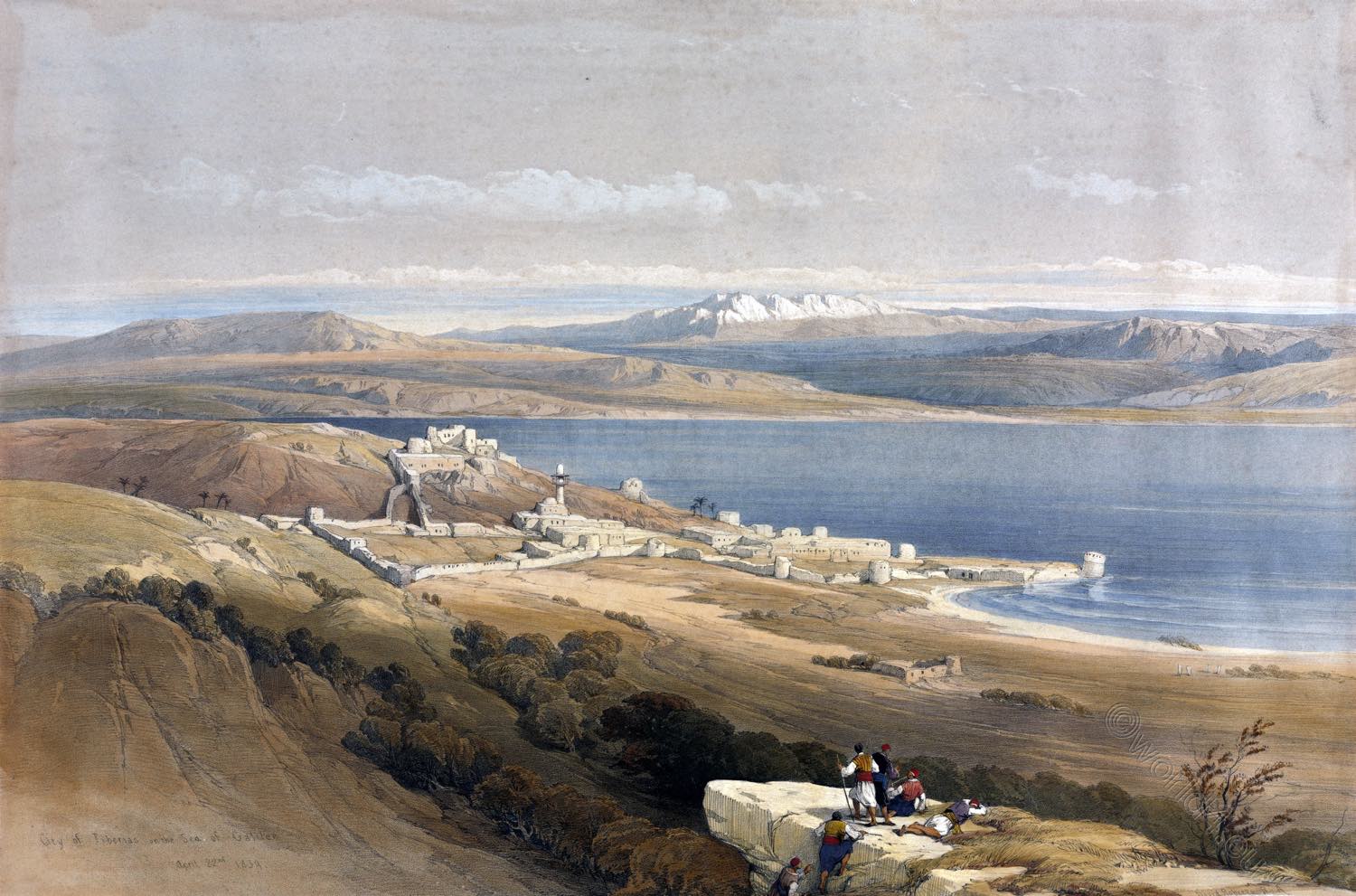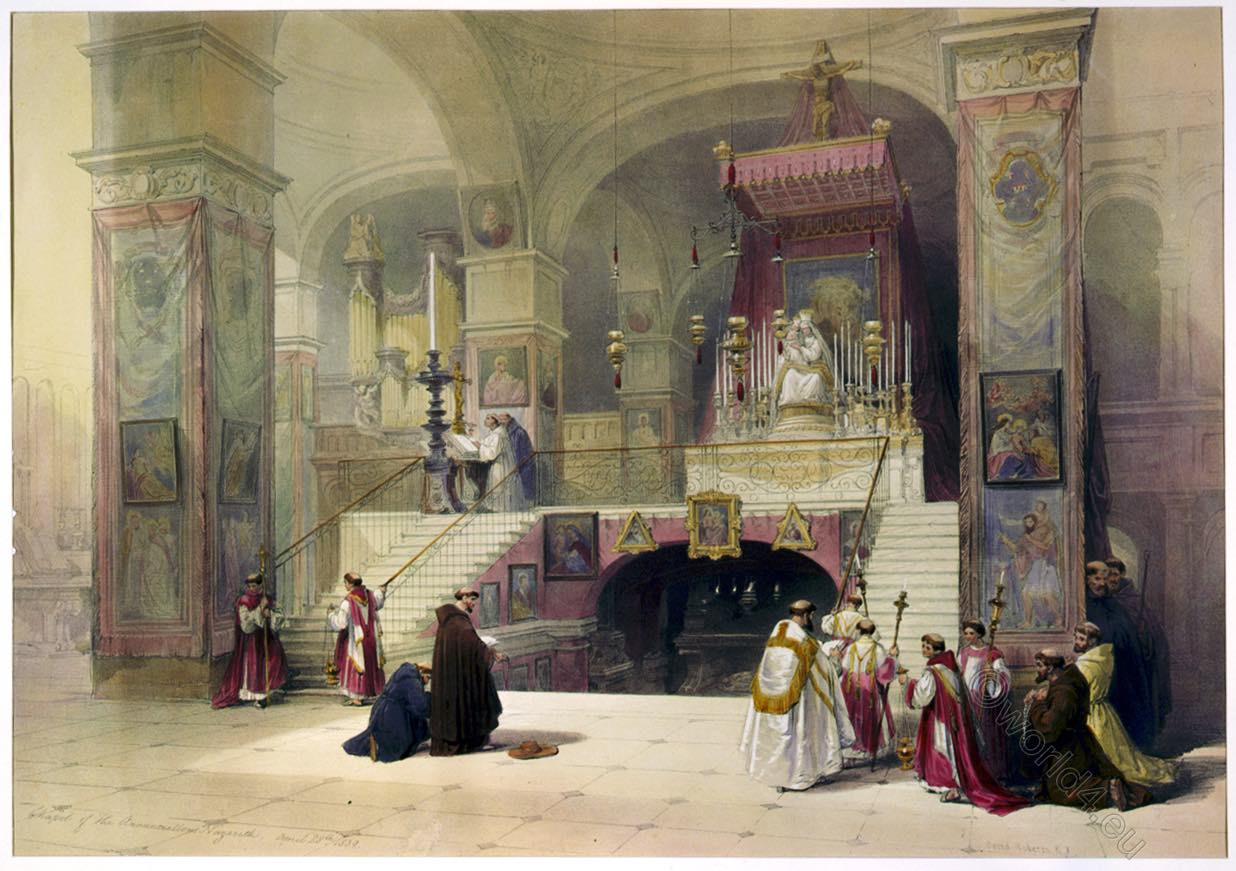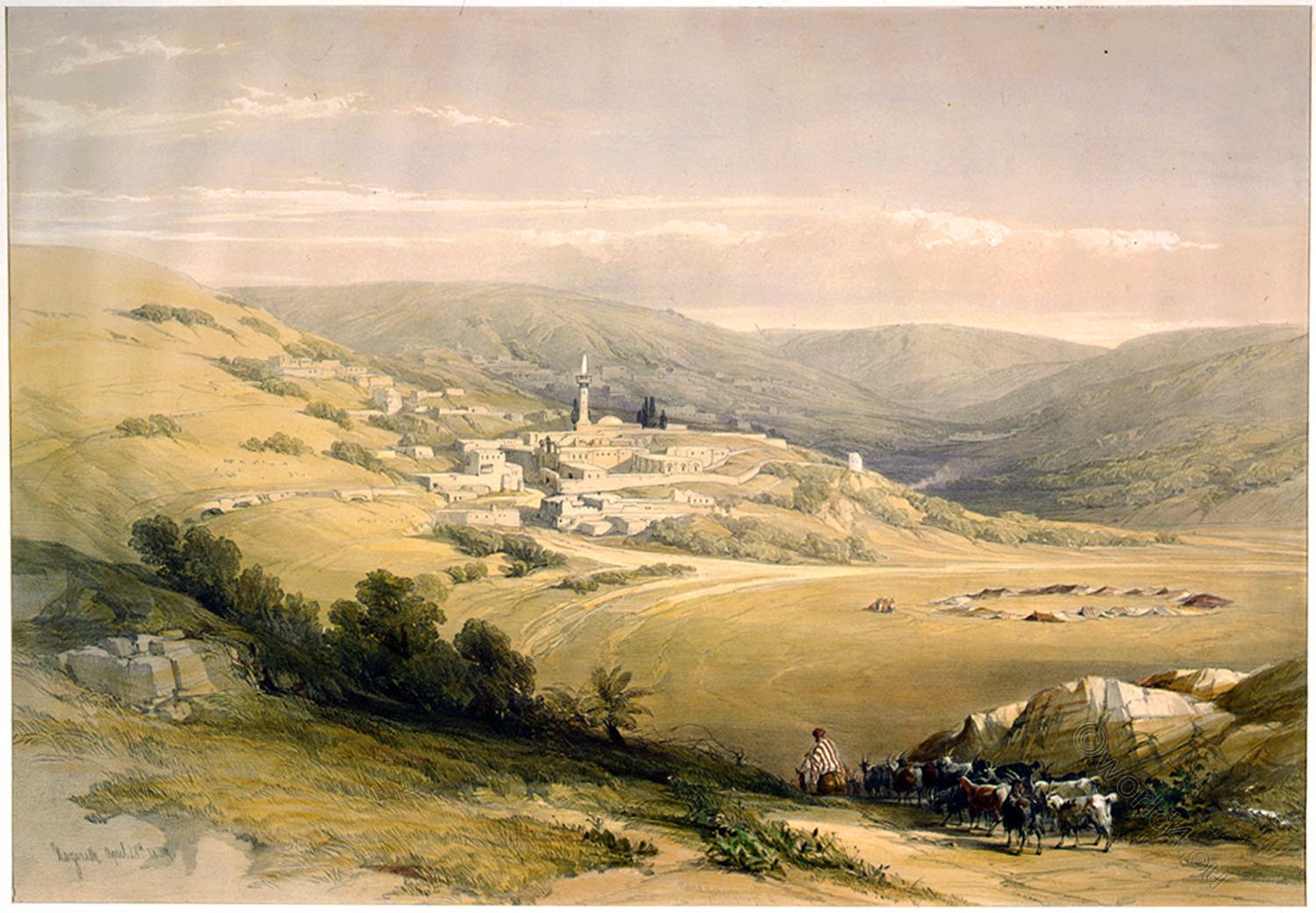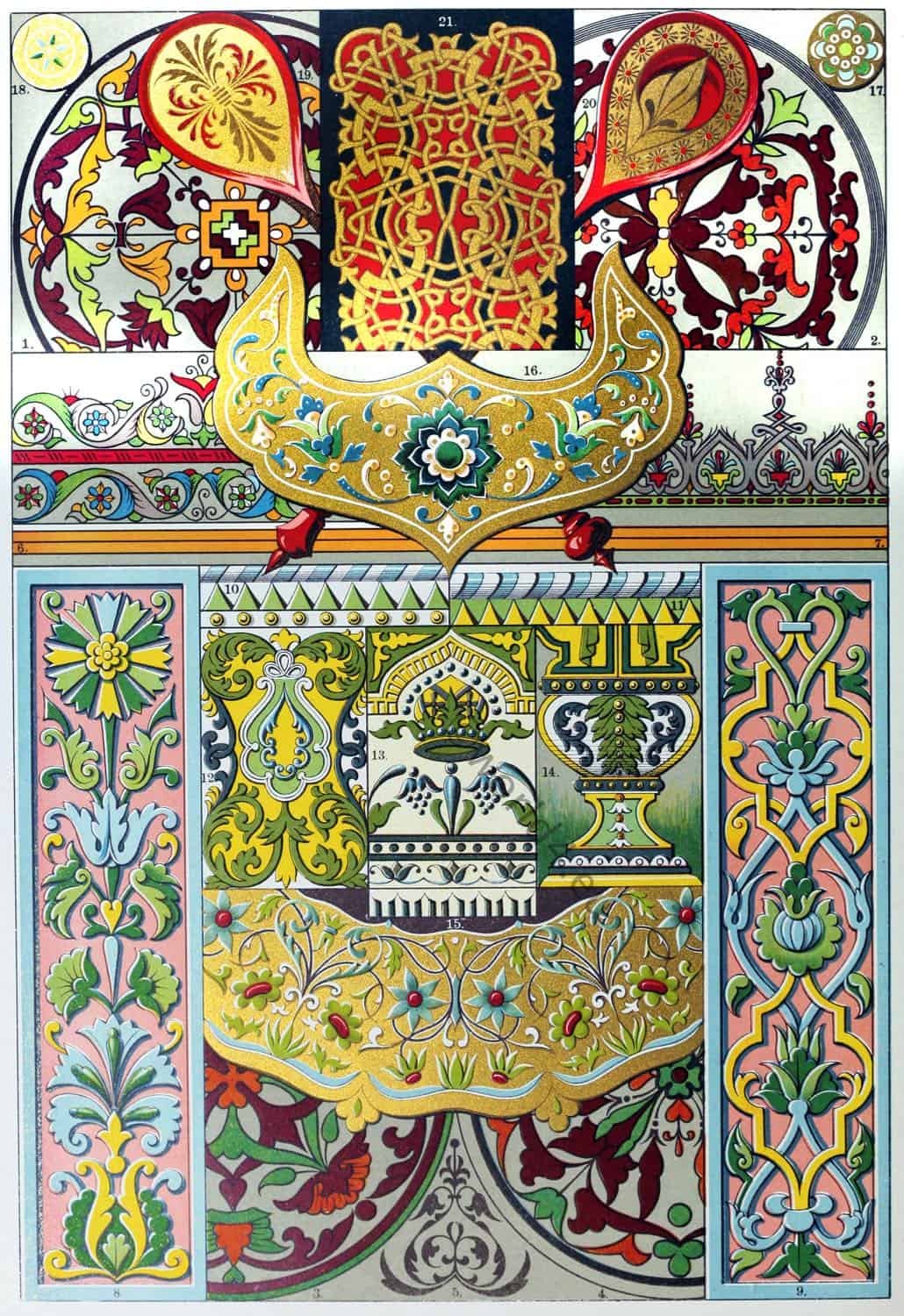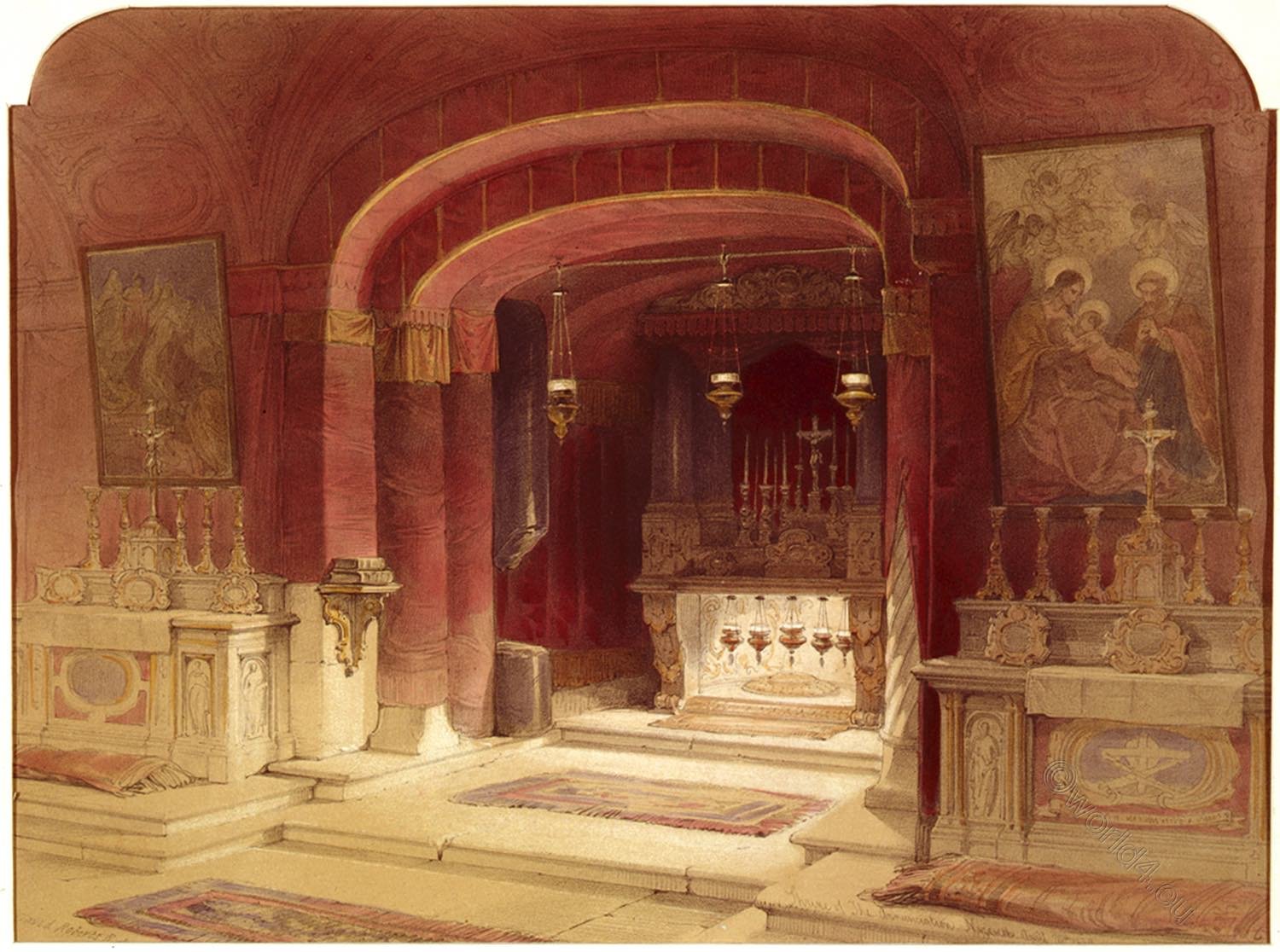
Safed (Hebrew צפת Tzefat; Arabic صفد Safad) is an 840 m high town in the Galilee in the northern district of Israel. It is located on one of the highest mountains of the upper Galil.
Safed is one of the four Holy Cities in Judaism, along with Jerusalem, Hebron and Tiberias. Safed gained significance as an important place of Jewish scholarship and was for a long time an intellectual centre of the Cabbalah.
Artists had been living and working in Safed since the early 1940s. They opened studios and galleries and founded the Artists Quarter Association.
TIBERIAS, FROM THE WALLS; SAFED IN THE DISTANCE.
by David Roberts
This Sketch, in addition to the view of the City, gives, in the distance, crowning a lofty hill, the City of Safed. The land is peculiarly liable to earthquakes; Safed was fearfully visited in the middle of the last century (1759); but a still heavier visitation befell it in 1837. On the first day of the year, a succession of the most violent shocks rent the earth in many places, and almost instantly overthrew the chief part of the dwellings. The loss of life was dreadful, though perhaps too largely calculated at five thousand; four-fifths of the sufferers were Jews. 1)
Safed is venerated as one of the four holy cities of Judea; the others being Jerusalem, Hebron, and Tiberias. Its prominent position led to its being fortified at an early period. By some authorities it has been supposed to occupy the site of Bethulia, and by others, that of Kitron, a city of Zebulon. But, nothing is distinctly known of the City before the Crusades, when it afforded shelter to Baldwin III. after his defeat at El-Huleh, in 1157.
Safed is, however, chiefly celebrated for its Rabbinical school, one of the most distinguished among the Jews, and for many centuries it has been thus regarded; but the period of its scholastic foundation is not certain, it was probably long after the conquest by Bibars. Its palmy days were, however, during the sixteenth century, when the most eminent of the Rabbins lived and taught there; and at this early period (1578) it had an established printing-office, which, even as late as 1833, still gave regular employment to a considerable number of persons.
2)
It has been supposed, that Safed was the “City set on a Hill,” to which allusion is made in the Sermon on the Mount, 3) and that the Hill itself was the Mount of the Transfiguration. 4) But both suppositions are unsustained by evidence.
1) Biblical Researches, iii. 318—338. 2) Roberts’s Journal. 3) Matt. v. 14. Maundrell, Apr. 19. 4) Büsching Erdbeschr. th. xi. i. 488.
Source: The Holy Land, Syria, Idumea, Arabia, Egypt, & Nubia, by David Roberts, George Croly, William Brockedon. London: Lithographed, printed and published by Day & Son, lithographers to the Queen. Cate Street, Lincoln’s Inn Fields, 1855.
Continuing
Discover more from World4 Costume Culture History
Subscribe to get the latest posts sent to your email.

